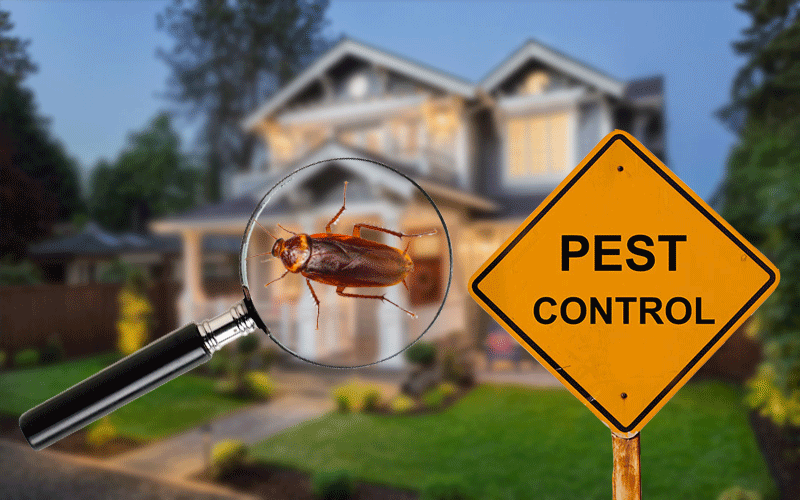Reliable Pest Control Solutions: An Extensive Consider Elimination Techniques and Prevention Measures
In the world of insect control services, the effective management of invasions requires a thorough technique that incorporates various strategies and steps for both elimination and prevention. From Integrated Insect Administration (IPM) strategies that focus on sustainable options to chemical elimination methods created for targeted removal, the arsenal versus pests is diverse and huge.

Integrated Parasite Monitoring (IPM) Methods
Integrated Bug Administration (IPM) Techniques encompass a thorough technique to pest control that focuses on surveillance, control, and prevention approaches to efficiently take care of bug populations. By incorporating numerous strategies, IPM aims to minimize the effect of insects while additionally minimizing the dependence on chemical pesticides. Avoidance exists at the core of IPM, stressing techniques like appropriate hygiene, maintenance of health, and securing entry indicate hinder insects from infesting structures. Surveillance plays a crucial function in IPM by routinely checking and recognizing bug degrees to determine the proper treatment thresholds. Control techniques in IPM prioritize making use of physical, organic, and social strategies before transforming to chemical therapies as a last resource. These methods consist of presenting all-natural predators, habitat alteration, and utilizing capturing devices to maintain insect populaces in check. Generally, IPM fosters a environmentally aware and sustainable method to pest management, advertising long-lasting options that safeguard both human wellness and the ecological community.
Chemical Elimination Methods
Chemical elimination techniques are typically employed in pest control services to successfully eliminate parasite populations that posture a danger to human health and residential property. These methods entail the use of various chemical compounds specifically made to target and get rid of parasites such as bugs, rats, and other undesirable creatures. The application of chemicals, pesticides, rodenticides, and various other chemical agents is meticulously controlled to guarantee maximum performance while decreasing threats to people, animals, and the atmosphere.
One of the key benefits of chemical elimination techniques is their capacity to provide quick and targeted results, making them specifically beneficial in instances of serious infestations or urgent insect control demands - a1 bed bugs exterminator portland. Nonetheless, it is important to emphasize the value of correct handling, application, and disposal of these chemical products to protect against unexpected injury
Additionally, incorporated pest administration (IPM) strategies typically combine chemical extermination techniques with various other methods such as hygiene, habitat adjustment, and biological controls to create a lasting and extensive insect control approach. By including chemical elimination techniques deliberately within an IPM structure, pest control services can effectively handle bug populaces while decreasing possible risks to human wellness and the atmosphere.
Biological Pest Control Techniques
Employing all-natural killers and parasites to take care of insect populations is a sustainable method called organic insect control. This method takes advantage of the natural mechanisms of the environment to control insect populaces without depending on artificial chemicals. One typical biological control technique involves presenting all-natural opponents of the target pest species, such as ladybugs for aphid control or nematodes for termite invasions. These natural killers feed upon the pests, aiding to keep their populaces in check.
Another effective organic control technique is making use of microbial pesticides. These are normally occurring microbes, such as fungi, bacteria, and viruses, that especially target and infect particular parasite varieties. By making use of these microbial agents, bug populations can be successfully decreased without causing or harming beneficial microorganisms injury to the setting.
Physical Parasite Avoidance Procedures
Applying physical pest prevention measures entails making use of barriers and architectural alterations to prevent bugs from going into or infesting a home. Installing door sweeps, displays on home windows, and securing cracks in the foundation can help prevent insects like pests and rodents from getting accessibility indoors.
Another physical prevention procedure is the use of barriers like fence to maintain bigger my response pests such as raccoons or deer away from the property. Setting up mesh or cable displays around gardens can safeguard plants from being damaged by parasites. Appropriate waste administration, including safeguarding wastebasket with tight-fitting covers, is important in preventing parasites like rodents, raccoons, and bugs. By executing these physical parasite prevention steps, homeowner can dramatically reduce the risk of insect invasions and the damages they can create.
Specialist Bug Assessment Procedures
Carrying out systematic and detailed insect assessments is an essential facet of professional parasite administration procedures. Professional insect inspectors bee removal are educated to carefully check out residential or commercial properties for signs of problems, determining pest species, entrance points, and favorable problems.

Final Thought
In final thought, effective pest control solutions use a selection of strategies, including Integrated Insect Administration methods, chemical extermination approaches, organic controls, and physical avoidance procedures. Expert parasite examination procedures play a vital role in identifying and dealing with pest problems in a timely way. By carrying out a combination of these methods, homeowner can efficiently avoid and manage pest infestations.
From Integrated Bug Monitoring (IPM) techniques that focus on lasting options to chemical elimination strategies made for targeted removal, the collection against bugs is diverse and vast.Integrated Parasite Management (IPM) Techniques click for more info encompass a comprehensive approach to pest control that focuses on prevention, control, and tracking methods to properly handle insect populaces.Chemical elimination techniques are frequently employed in parasite control solutions to efficiently get rid of insect populaces that pose a risk to human health and residential or commercial property.Utilizing natural killers and bloodsuckers to take care of insect populaces is a lasting approach known as organic pest control.In verdict, efficient insect control solutions use a selection of techniques, consisting of Integrated Bug Management methods, chemical extermination approaches, organic controls, and physical avoidance procedures.